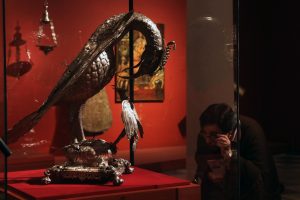
Lima, Aug 1 (EFE).- An exposition showcasing an invaluable collection of more than 350 silver pieces looks back at five centuries of Andean silverwork, featuring everything from ancient pre-Inca ceremonial items to crafts by 20th century Indian artisans.
The exhibition, titled “Plata de los Andes” (Silver of the Andes), will be open until Oct. 28 at the Lima Museum of Art (MALI) and is the largest of its kind, curator Ricardo Kusunoki – who, along with historian Eduardo Wuffarden, put together the show – told EFE.
Many of the historic pieces are displayed to the public for the first time ever, as they are part of exclusive ecclesiastical lots, as well as private and state-owned collections from all over the country, particularly Lima, Cuzco and Arequipa.
“Gathering all of them has been an extremely complex process,” Kusunok said. “I think that the exhibit provides an exceptional opportunity to observe very high-quality pieces that are not normally showcased.”
The collection includes pre-Columbian silverwork, as well as an assortment of colonial liturgical objects and jewelry, among other items.
The amount of silver on display takes visitors back to the rescue of Atahualpa, a passage in history in which the Inca people were forced to pay the Spanish conquistadors as many as six tons of gold and nearly 12 of silver in exchange for the release of the last Inca emperor more than 500 years ago.
The ransom included many sacred artifacts considered to be heathen, which were massively destroyed and melted into ingots and coins, thus greatly boosting western economy.
The show – which is sponsored by the Credit Bank of Peru (BCP) – also includes smaller items, displaying fine craftsmanship and finesse, though some of them are mundane objects, such as potties and silverware.
